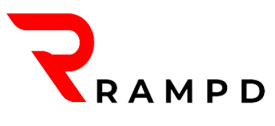Stepping into the SaaS sales space? Strap in for a stimulating journey. As you navigate this nuanced niche, your success hinges on honed skills and deep knowledge. That’s where our comprehensive guide to SaaS sales training comes in.
We’ve packed this piece with everything you need to know. From understanding the unique landscape of the SaaS industry, mastering both inbound and outbound sales strategies, aligning your sales and marketing efforts seamlessly, and tackling specific challenges thrown at you by this dynamic domain, everything you need to know about SaaS sales is here.
You’ll also discover diverse SaaS sales models, key metrics that matter, and essential tools that’ll turbocharge your trajectory toward triumph. Whether you’re a seasoned pro or just getting started, we’ve got insights aplenty to enrich your expedition in the exhilarating world of SaaS sales.
So get ready – it’s time to take your SaaS sales training talents to new heights.
Table of Contents
- Key Takeaways
- Understanding the SaaS Industry
- What Is B2B SaaS Sales Training?
- Inbound vs. Outbound Sales
- Different Sales Models
- Aligning Sales and Marketing
- Addressing SaaS Challenges
- SaaS Sales Strategies
- Key Sales Metrics For Your Sales Team
- Essential SaaS Tools
- The Best SaaS Sales Training Tips For Better In-house Sales
- Frequently Asked Questions
- What soft skills are necessary for success in SaaS sales?”
- How does the role of a SaaS sales representative differ from other sales roles?
- What are some effective methods for continued learning and development in SaaS sales?
- What is the role of ethics in SaaS sales, and how can it impact the sales process?
- How does one handle rejection or a ‘no’ in the SaaS sales process?
- Conclusion
Key Takeaways
- SaaS sales training should cover the basics of the SaaS industry, including its growth, affordability, and ease of access and integration.
- The SaaS sales process should include stages such as prospecting, qualification, needs assessment, objections handling, closing, and nurturing.
- Both inbound and outbound sales methods are valuable for boosting revenue, but their suitability depends on factors such as brand awareness, product searchability, and sales cycle length.
- SaaS companies can adopt different sales models based on their target audience and goals, including traditional, enterprise, and customer self-service.
Are you prepared to revolutionize your SaaS sales performance and unlock unparalleled growth? Embrace the transformative power of Rampd’s cutting-edge sales training programs to propel your revenue to new heights.
Schedule a call with Darren now to gain invaluable insights and personalized guidance on achieving your first million in revenue. With Rampd by your side, take charge of your sales journey and achieve exceptional results.
Understanding the SaaS Industry
Diving into the vibrant SaaS industry, which has exploded by a whopping 500% in the last seven years, is like stepping into a bustling city of digital innovation. Here, software solutions are not just downloaded but accessed over the internet and customized to fit users’ needs like unique puzzle pieces.
Understanding this dynamic industry is crucial as part of your SaaS sales training. You must grasp its unique sales process, learn effective sales strategies, and identify market opportunities. Sales training programs tailored for software sales training will equip you with these essential skills.
The more familiar you become with the SaaS industry’s nuances, the better positioned you’ll be to excel in your role and foster a sense of belonging within this ever-evolving digital landscape.
What Is B2B SaaS Sales Training?
Let’s delve into the intricacies of how cloud-based products are sold, from initial prospecting to closing the deal and nurturing client relationships. SaaS sales training is essential in honing your sales team’s skills for better conversion rates.
- Understand your prospects: Identify their needs and align these with your product’s benefits.
- Show empathy: Engage with prospects personally, making them feel valued.
- Overcome objections: Equip your team with effective strategies to tackle any concerns raised by potential customers.
- Foster relationships post-sale: Don’t abandon clients after closing the deal; nurture these relationships for future upselling or referrals.
Investing in a comprehensive sales training program empowers your team to perform at their best—ultimately driving new customers toward your SaaS offering.
Inbound vs. Outbound Sales
In the realm of selling software, it’s vital to recognize the stark differences between inbound and outbound strategies. Your sales training program should emphasize this distinction.
Inbound sales involve prospects who are already interested in your product reaching out to you. These potential customers tend to be more knowledgeable about your brand, making them prime targets for your sales professionals.
On the other hand, outbound sales require your reps to initiate contact with potential buyers, often those unaware of your offerings.
Both inbound and outbound strategies have their unique benefits and challenges in a SaaS sales training context. The right sales coaching program can empower your team to navigate these strategies effectively, enhancing both individual performance and overall revenue growth.
Ready to elevate your sales skills and join the ranks of successful founders? Discover the unparalleled impact of Rampd’s comprehensive sales training and connect with Darren for proven methodologies and personalized coaching to close your first million in revenue. Don’t miss out on this exclusive opportunity to accelerate your sales success. Click here to book a call with Darren.
Different Sales Models
Understanding the various sales models can significantly enhance your team’s effectiveness and boost your bottom line. Let’s delve into different sales models in SaaS sales training to equip your team with diverse strategies.
Transactional Sales Model
Transactional sales, a widely adopted and easily scalable model, involves selling software to small and medium-sized businesses through phone interactions and occasional in-person meetings. To succeed in this domain, sales teams undergo rigorous saas sales training, equipping them with turnkey sales skills training and comprehensive knowledge of the software.
In this model, personalized service is crucial due to the relatively higher cost of the software. Sales representatives are pivotal in the sales process, utilizing sales strategies to cater to diverse use cases and offer customizable solutions. Pricing contracts, including tiered pricing models, are carefully presented to potential customers, with authorized discounts provided by the sales reps and sales managers.
Marketing teams fuel the sales pipeline to drive customer acquisition and sales success, while sales professionals strive to meet monthly or quarterly quotas. This transactional approach thrives on delivering value to clients and cultivating repeat business.
Customer Self-Service Model
On the other hand, the customer self-service model proves highly effective for selling lower-priced SaaS products. Customers sign up independently online, and websites entice them with freemium offers and free trials. Although customer service is limited, the sheer volume of sales, such as Spotify subscriptions and Medium memberships, generates significant revenue.
Enterprise Sales Model
In contrast, the enterprise sales model targets high-price, specialized software solutions. Salespeople dedicate considerable time to addressing inquiries, conducting software demonstrations, and meeting with key executives. With a focus on consultative selling, sales teams approach a select group of high-potential prospects, often organized by territories.
B2B sales are more prominent in this enterprise model for complex or niche SaaS products catering to larger companies. Sales leaders strategically create and implement sales programs, leveraging unique market opportunities to create successful businesses with hundreds of thousands in potential revenue.
In conclusion, the transactional, customer self-service, and enterprise sales models require distinctive sales strategies, training, and skillsets. By focusing on performance, creating value, and understanding the nuances of each model, businesses can unlock their full sales potential and thrive in the competitive SaaS landscape.
Remember, each model requires unique strategies and skills. Investing in a comprehensive sales training program ensures your teams are well-versed in these different approaches, optimizing their performance for any situation they encounter.
Aligning Sales and Marketing
Ever heard of a rock band with the drummer and guitarist playing out of sync? Just like music, your marketing and sales teams must be in perfect harmony for your business to strike the right chord.
In SaaS sales training, aligning sales and marketing is as crucial as learning different sales strategies. This alignment ensures that your team stays on the same page throughout the customer acquisition process. It can also facilitate lead nurturing and increase deal closing rates, making it essential to any successful sales training program.
Remember, when your teams are trained to work together seamlessly in every step of the sales process, you’re setting yourself up for long-term sales success. Don’t miss this vital beat!
Addressing SaaS Challenges
Having aligned your sales and marketing teams, the next step in your SaaS sales training program is addressing SaaS challenges.
The unique structure of the SaaS industry presents a range of potential obstacles. Overcoming these requires targeted sales skills training to equip you with strategies specific to BB SaaS.
Consultative selling becomes key as you’ll need a deep understanding of your prospect’s needs and goals to address their concerns during a sales call effectively.
Learning how to manage your sales pipeline efficiently is crucial, ensuring valuable leads don’t fall through the cracks.
This section of our program will equip you with the tools and techniques necessary for overcoming common hurdles, equipping you for success in this dynamic field.
SaaS Sales Strategies
Ready to conquer the SaaS world? Let’s dive into the top-notch strategies that’ll help skyrocket your success!
Your SaaS sales program training should equip your sales representatives with effective selling skills and get started on sales calls. Here are a few strategies:
- Mastering long sales cycles: The lengthier process requires persistence and patience. Make sure your reps understand how to nurture leads over time.
- Developing deep product knowledge: Knowing every feature is key with complex software. A well-informed rep can convincingly sell its benefits.
- Building strong relationships: People buy from people they trust. Train reps on establishing rapport and creating connections.
Remember, successful sales organizations know that continuous improvement in their sales training programs can significantly impact their bottom line. Don’t let yours fall behind!
Key Sales Metrics For Your Sales Team
Knowing how to gauge your progress is paramount in your quest to conquer the SaaS world. You’ll understand where you stand and steer your team toward remarkable success by focusing on crucial metrics like customer churn rate, average revenue per user, and net promoter score.
In any sales training program, especially in SaaS sales training, these key sales metrics are instrumental in measuring performance. These figures assist salespeople in honing their strategies and improving win rates.
As part of the sales force navigating through this dynamic landscape, understanding these numbers can significantly improve performance and guide strategic decisions. So remember: number tracking isn’t just for accountants; it’s an integral part of championing the SaaS market!
Essential SaaS Tools
You’ll love exploring the diverse range of essential tools designed to make your life easier as you navigate the thrilling world of software service sales.
These SaaS tools are vital to any sales training program, enhancing your sales skills and strategies.
- CRM Software: This tool manages customer interactions and data throughout the customer lifecycle.
- Sales Analytics Tools: These provide invaluable insights into your sales process, helping you identify areas for improvement.
- Email Automation Tools: They streamline communication with prospects, ensuring consistent engagement.
Embrace these essential SaaS tools in your SaaS sales training to boost efficiency and effectiveness. Solidifying your grasp of these key resources is crucial to your sales training content journey.
The Best SaaS Sales Training Tips For Better In-house Sales
Ready to learn how to improve your SaaS sales training? Here are some top tips to put into action to increase your sales numbers.
- Product Mastery: Ensure that your sales team has an in-depth understanding of the product, its features, and its value proposition. This knowledge is crucial for effectively communicating the benefits to prospective customers.
- Targeted Customer Knowledge: Train your sales team to understand the specific needs, challenges, and pain points of your target customers. This will enable them to tailor their sales pitches to address these areas and showcase how your SaaS solution can solve the prospective customer’s problems.
- Effective Communication: Equip your sales team with effective communication skills to clearly and convincingly convey the value of your SaaS product to potential customers. This includes active listening skills to understand the customers’ needs better and respond accordingly.
- Sales Process Familiarity: Ensure your sales team is well-versed in your company’s sales process, including the stages of the sales cycle, lead qualification criteria, and the tools and technologies used in managing customer relationships.
- Customer Success Principles: Instruct your sales team on customer success principles to prioritize long-term customer satisfaction and retention, which, in turn, will help generate more value from each customer and potentially boost revenue with less sales input.
- Continuous Learning and Development: Encourage a culture of continuous learning and development to keep your sales team updated with the latest product enhancements, industry trends, and sales techniques.
- Practical Application: Incorporate role-play, simulations, and real-world scenarios in your training program to provide your sales team with a practical application of the skills and knowledge acquired during training.
- Performance Metrics and Feedback: Establish clear performance metrics to evaluate the effectiveness of the training program and provide constructive feedback to help your sales team improve.
- Rethinking Traditional Sales Training: Consider moving away from the traditional sales kick-off model and incorporating daily practice and roleplay in a “safe zone” to allow your sales team to learn, practice, and improve their skills continuously.
- Using Technology for Training: Leverage advanced training platforms and technologies to provide interactive and engaging training experiences. This includes utilizing virtual training labs and online courses that allow for hands-on learning and practice.
- Incorporating Customer Feedback: Include real customer feedback in the training program to help your sales team understand the customers’ perspective better and learn from previous interactions.
By implementing these tips with your SaaS sales team, you should be increasing sales and closing more in no time.
Want even more tips on closing deals when selling B2B SaaS products? Book a call with Darren and utilize his years of B2B SaaS sales knowledge. Click here to learn more and book a call.
Frequently Asked Questions
What soft skills are necessary for success in SaaS sales?”
In SaaS sales, you’ll need strong communication skills, empathy to understand customer needs, and resilience to navigate long sales cycles. Additionally, being tech-savvy and having a collaborative mindset is essential for your success.
How does the role of a SaaS sales representative differ from other sales roles?
As a SaaS sales rep, your role extends beyond standard sales. You’re not just selling a product but also offering continuous service and solutions. Your focus isn’t solely on closing deals but also building lasting relationships.
What are some effective methods for continued learning and development in SaaS sales?
Did you know that 87% of sales training content is forgotten within weeks? To avoid this, engage in regular role-play scenarios. Read industry news and blogs. Join webinars or podcasts. Constantly update your product knowledge.
What is the role of ethics in SaaS sales, and how can it impact the sales process?
“Ethics plays a vital role in SaaS sales. Being honest and transparent builds trust with your prospects, impacting the sales process positively. It fosters long-term relationships and promotes a sense of belonging among customers.”
How does one handle rejection or a ‘no’ in the SaaS sales process?
When you face a ‘no,’ don’t take it personally in SaaS sales. Use the rejection as an opportunity to understand the prospect’s needs better and improve your approach for future interactions. Everyone gets rejected sometimes—it’s part of growth.
Conclusion
In conclusion, mastering SaaS sales isn’t just about closing deals. It’s about building relationships, understanding your market, and using the right tools and strategies.
Did you know that a well-aligned sales and marketing team can increase revenue by 208%?
With effective training, you’re boosting skills and transforming your entire approach to SaaS sales.
Are you in pursuit of unmatched sales expertise and guidance? Seize the chance to collaborate with Darren and the esteemed Rampd team. Book a call today and tap into their vast knowledge, uncovering the strategies that have propelled countless founders to remarkable revenue milestones. Click here to take the crucial first step towards your first million and unlock your full sales potential with Rampd’s unparalleled support.



